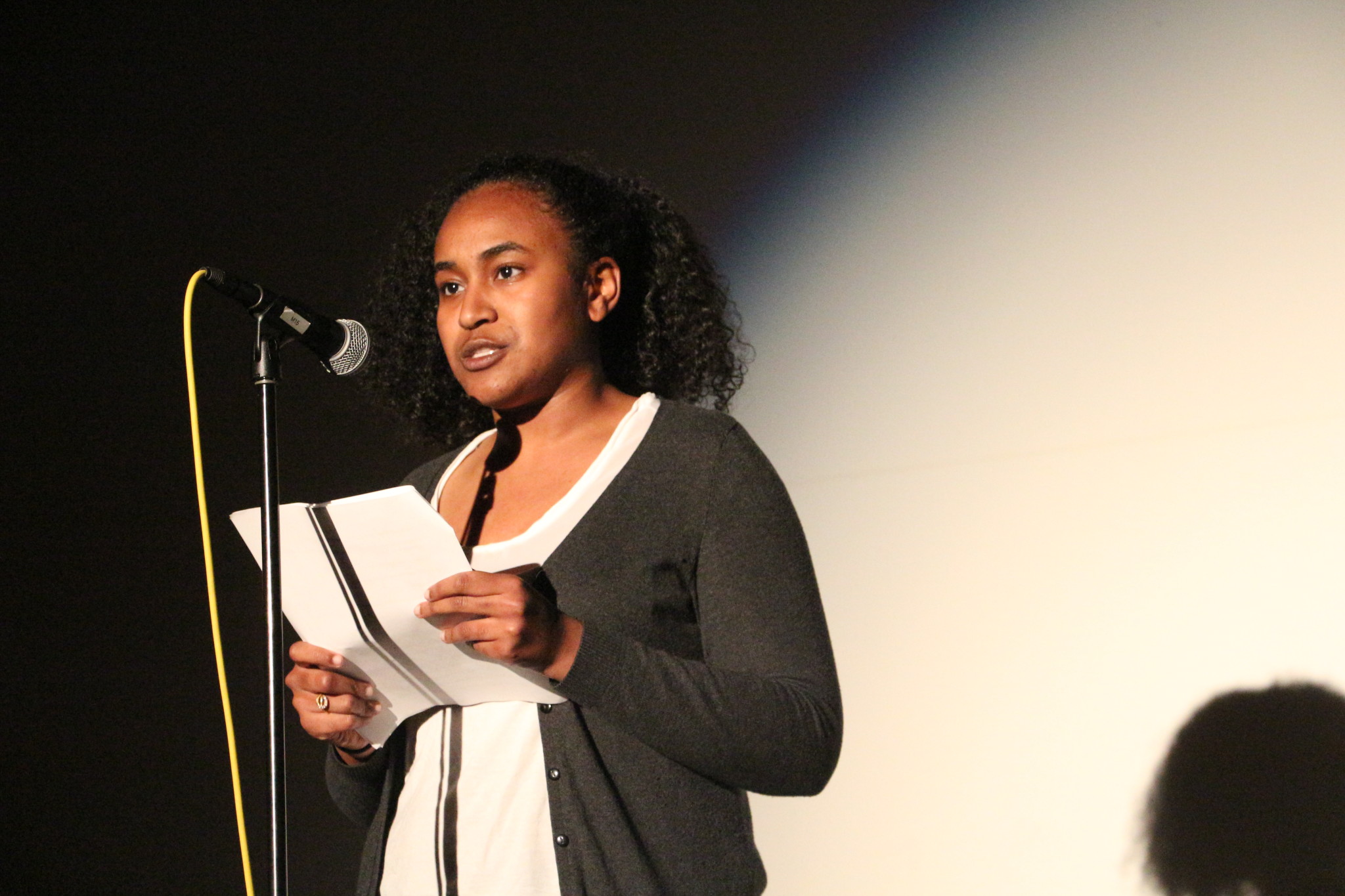Members of the College of William and Mary community gathered in Commonwealth Auditorium Wednesday to hear the Muslim Student Association’s presentation of “Muslim Voices: Sharing the Experiences of William & Mary Muslims.” The event marks the start of the celebration of Islam Awareness Month.
“By listening to these stories, we hope to reach a greater understanding for us all,” Muslim Student Association President Maab Yasin ’15 said in a statement from the MSA. “You may find commonality, you may find difference, and we offer a hand to all of you seeking more knowledge.”
Fifteen William & Mary Muslims shared their stories on the Commonwealth Stage at a single microphone, lighted only by a single spotlight and ten lanterns. Their stories — which were presented in both narrative and poetry — ranged from the wrong assumptions made about Muslim culture to the discrimination faced both in and out of the classroom and the diversity of experiences for Muslims growing up in the United States.
Zaid Kahn ’18 read from an anonymous submission by an Indonesian male of the class of 2016.
“William and Mary is a wonderful place,” Kahn said. “Coming from a country that has a majority Muslim population, I find it’s a bit challenging during this first month. It’s hard for me to find a place to pray — there’s no break for salāt, so sometimes I have to perform two or three salāt together.”
Many stories also focused on the assumptions made about women who choose to wear the hijab, sometimes referred to as hijabis. The speakers emphasized that it is a misconception that hijabis are oppressed.
“Why can’t you see there’s a colossal difference between what’s on my head and what’s inside of it?” Yussre ElBardicy ’16 said. “I didn’t get into this school because of what’s on my head, I am not defined solely by what’s on my head. What is wrong with me if I all I can see when I look at a hijabi is a single identity? What is wrong with me if I see nuns as holy sisters with their tunics and habits, but I see oppression when I see a Muslim woman of a similar status? What is wrong with me if I separate my experiences from yours on the basis of your clothes, because you look too different to share anything with me? Let me remind you that I am not oppressed—I choose the way I dress. So don’t go around trying to liberate me, because you can’t liberate the free.”
ElBardicy discussed her encounters with discrimination and assumptions at the College. She said that once, while walking past Swem, a person yelled at her from a car, screaming that he could not see her hair and asking what was wrong with her. A professor also remarked that ElBardicy’s English was quite good despite her being born and raised in Northern Virginia.
“‘You almost sound like an ordinary, average American.’ I’m confused, so I ask him to explain … he laughs. ‘It’s the shoes,’ he jokes,” ElBardicy said. “And as I look to my boots, I realize that to him, my religion negates my nationality, to him I can only have one identity.”
Zaynab Irshad ’16 expressed her decision not to wear the hijab and the backlash she felt in her community.
“Was the reason for the scarf to avoid the gazes of men?” Irshad said. “Why couldn’t men control themselves? At the age of 19, I took off my headscarf. There is no place for me in the Islam community if I am perceived for being an infidel for not following the religion exactly as it is stated. For the future women of the world, may we create an environment where they may prosper despite any flaws or inflictions others put onto them.”
Saif Faiz ’17 discussed the discrimination he and his family faced as one of the few Muslim families in the Williamsburg community. During his junior year of high school, Faiz’s car was defaced by a senior who spray painted his car eight times with the numbers, “9/11.”
Students also talked about how their multiple identities affect how the College community perceives them and how they sometimes feel boxed in by the stereotypes of others.
“You don’t know me – you judge me from what you see, and you probably assume I’m dumb, just like any other ‘n –.,” Omar Ahmed ’16 said. “All you hear in the news is Boko Haram and ISIS, but don’t you see right in front of you is a crisis? As bullets tear in our brothers, and tears shed by our mothers…you still don’t know me.”
Ayat Elhag ’16 echoed Ahmed’s concerns about her multiple identities and how they are portrayed and perceived by others.
“A woman, a person of color, a Muslim — I am all of those things, a trifecta of oppression, if you will,” Elhag said. “I mourn the deaths of my multiple identities each morning. The pain rips through me as if I were the one shot, tortured and suffocated. But I can never show this pain. As a woman of color, if I show any passion for anything, I’m molded into the ‘angry black girl.’ I can never shed this burden, and I’m thrown in this cycle of self-hatred, living up to the stereotype of having my voice silenced by this scream of how my life matters, how black lives matter, Muslims matter.”
This was the first of many events held by the Muslim Student Association for Islam Awareness Month. There will be a lecture entitled “And the Man is not like the Woman: Feminist Interpretations of the Quran” by Saadia Yacoob March 31, a lecture on Islamophobia by Professor Sheehi April 7 and Fast-a-Thon to stand with Syria April 15.

